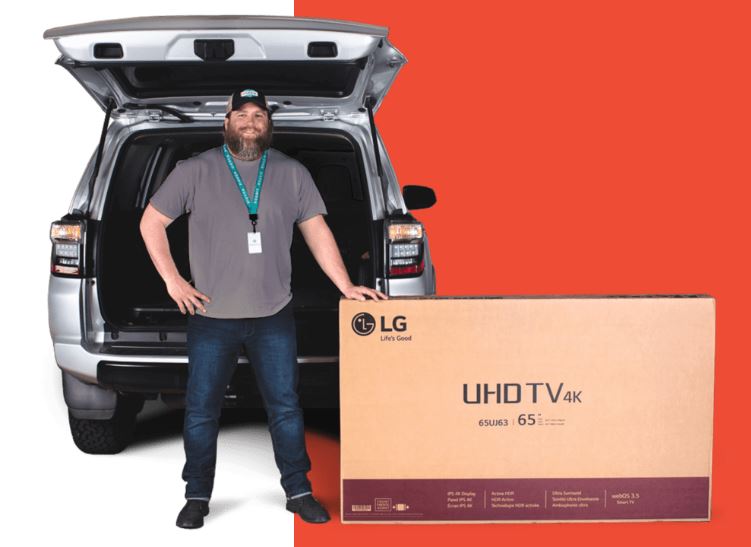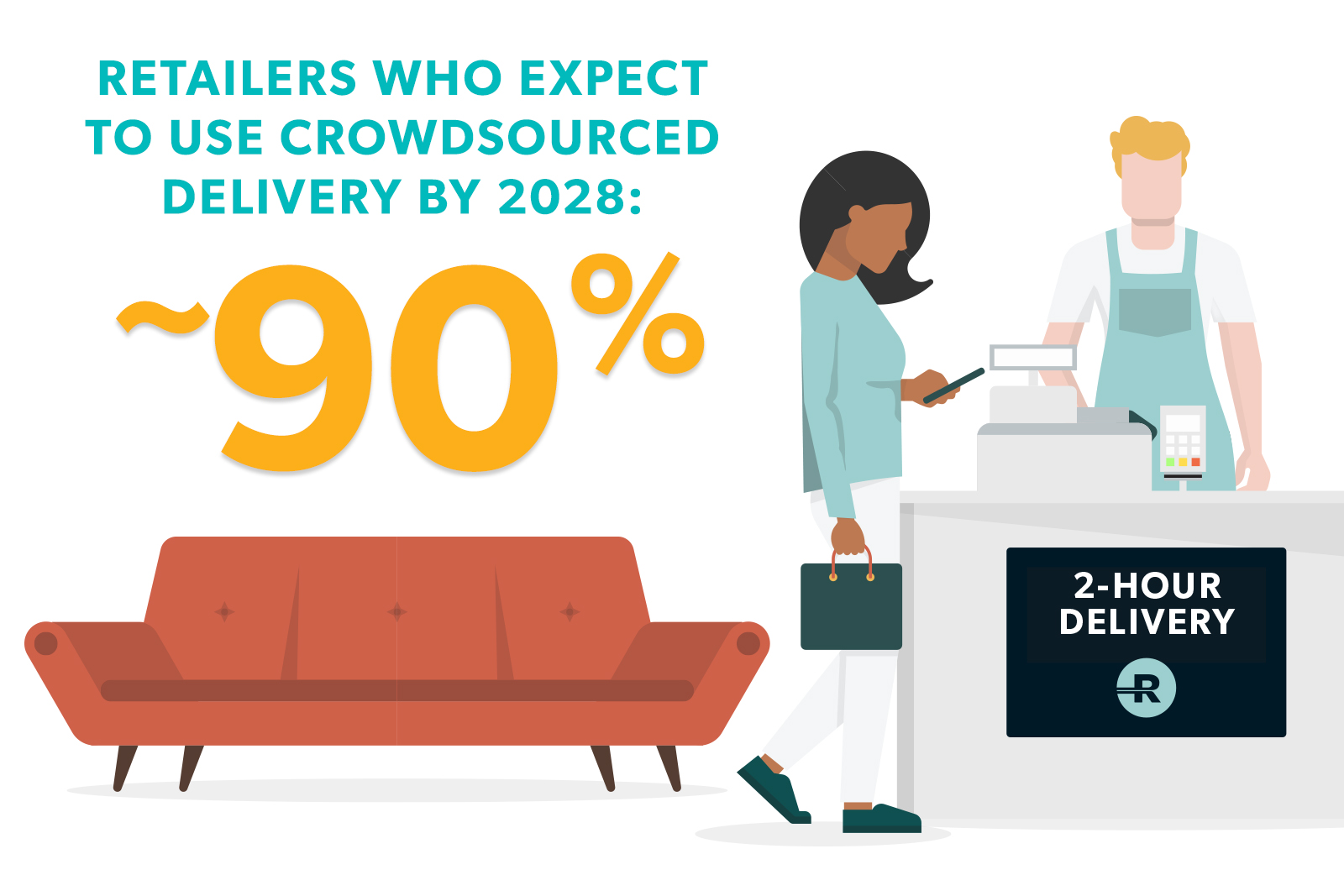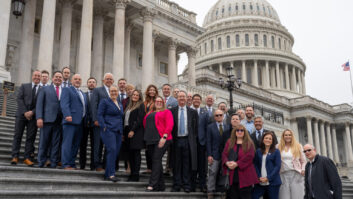
Customer expectations for faster and more flexible delivery are at an all-time high, and there’s no indication of it slowing down.
For retailers, that means flexible delivery options are practically a necessity, no matter if customers want to pick up curbside or request two-hour delivery to their door. In fact, customers’ desire for same-day and two-hour delivery has pressured retailers into a frantic search for a delivery solution on a national scale.
See: Amazon Seeding Delivery Startups
Historically, retailers have turned to employees or contractors to handle delivery across the supply chain. But that trend may come to a close, or at the very least, be subsidized with a new type of home delivery service: crowdsourced shipping.
A new global research study commissioned by Zebra Technologies shows that nearly 90 percent of retailers expect to use crowdsourced delivery to handle specific orders by 2028. That means almost all retailers will be tapping into an existing network of employees, customers and drivers to deliver one-off products to customer homes, from store to store, or from warehouse to store.

The study, which canvassed more than 2,700 transportation, logistics and retail professionals across the globe, concluded that “Solving the delivery challenge has given rise to a crowdsourcing model whereby retailers, manufacturers, logistics companies and technology newbies are working collaboratively to get products in the hands of shoppers faster. That comes as little wonder, as some of the world’s biggest retailers are increasing their same-day delivery capabilities to compete with online retailing giants.”
The crowdsourced or collaborative delivery model creates a completely new type of delivery system with the flexibility and scalability to handle same-day and last-mile deliveries at a predictable cost. Think everything from shirts and shoes to dressers and dining sets.
There’s no doubt that the $2.3 trillion global e-commerce landscape has driven the digital transformation of the retail supply chain. The want-it-now customer mindset birthed a new normal that has forced retailers to bridge the physical and digital to create an omnichannel home delivery and fulfillment strategy that satisfies the 24/7 bricks-and-clicks shopping world.
And, with only 39 percent of retailers feeling that they have a working omnichannel logistics strategy, they’d better get moving.
Here are some other key findings from Zebra Technologies’ The Future of Fulfillment Vision Study:
- Seventy-six percent of surveyed retailers use store inventory to fill online orders. Merchants are diving into “ship-from-store” to fulfill home delivery, retrofitting locations to double as online fulfillment centers and shrinking selling space to accommodate e-commerce pickups and returns.
- Eighty-nine percent of respondents agree that e-commerce is driving the need for faster delivery. The result has been a spike in concern and investment into the delivery space. Retailers are now seeking alternative, crowdsourced shipping solutions for same-day and last-mile delivery.
- Nearly 40 percent of retailers anticipate offering customers two-hour delivery by 2028. It’s no surprise that customers are flocking to the fastest and most convenient shopping experiences. Retailers will need to broaden their home-delivery service offerings to compete with online behemoths.
Valerie Metzker is the head of business at Roadie, a collaborative delivery network with over 70,000 pre-qualified drivers covering all 50 states.













